Title Page
Copyright
Foreword to the Second Edition
Preface
Acknowledgements
Author Biographies
Contents
Chapter 1: LTE Introduction
1.1 Introduction
1.2 LTE System Overview
1.3 The Evolution from UMTS to LTE
1.4 LTE/SAE Requirements
1.5 LTE/SAE Timeline
1.6 Introduction to the 3GPP LTE/SAE Specification Documents
1.6.1 Finding 3GPP Documents
1.6.2 LTE/SAE Document Structure
1.7 References
Chapter 2: Air Interface Concepts
2.1 Radio Frequency Aspects
2.1.1 Frequency Bands
2.1.2 Channel Bandwidths
2.1.3 Reference Measurement Channels
2.1.3.1 Uplink Reference Measurement Channels
2.1.3.2 Downlink Reference Measurement Channels
2.1.4 Transmit Power
2.1.4.1 UE Transmit Power
Accuracy for Maximum Output Power
2.1.4.2 Base Station Transmit Power
2.1.5 Output Power Dynamics
2.1.5.1 UE Output Power Dynamics and Power Control
2.1.5.1.1 Minimum Output Power
2.1.5.1.2 Off Power
2.1.5.1.3 Power Time Mask
2.1.5.1.4 Output Power Control
2.1.5.2 Base Station Output Power Dynamics
2.1.5.2.1 Resource Element Power Control Dynamic Range
2.1.5.2.2 Total Power Dynamic Range
2.1.5.2.3 Transmitter Off Power and Transient Period
2.1.6 Transmit Signal Quality
2.1.6.1 UE Transmit Signal Quality
2.1.6.1.1 Error Vector Magnitude Definition
EVM Equalizer Definition
EVM Window Length
2.1.6.1.2 Carrier Leakage IQ Component Definition
2.1.6.1.3 In-Band Emissions
General In-Band Emissions
IQ Image In-Band Emissions
Carrier Leakage In-Band Emissions
2.1.6.1.4 EVM Equalizer Spectrum Flatness
2.1.6.2 Base Station Transmit Signal Quality
2.1.6.2.1 Error Vector Magnitude
2.1.6.2.2 Time Alignment Error
2.1.6.2.3 Downlink RS Power Accuracy
2.1.7 Unwanted Emissions
2.1.7.1 Occupied Bandwidth
2.1.7.2 Operating Band Unwanted Emissions
2.1.7.2.1 UE Spectrum Emission Mask
2.1.7.2.2 Base Station Operating Band Unwanted Emissions
2.1.7.3 Adjacent Channel Leakage Ratio
2.1.7.3.1 UE Adjacent Channel Leakage Ratio
2.1.7.3.2 Base Station Adjacent Channel Leakage Ratio
2.1.7.4 Spurious Emissions
2.1.7.4.1 UE Spurious Emissions
2.1.7.4.2 Base Station Spurious Emissions
2.1.7.5 Transmit Intermodulation
2.1.7.5.1 UE Transmit Intermodulation
2.1.7.5.2 Base Station Transmit Intermodulation
2.1.8 Receiver Requirements
2.1.8.1 Reference Sensitivity
2.1.8.1.1 UE Reference Sensitivity
2.1.8.1.2 Base Station Reference Sensitivity
2.1.8.1.3 Base Station Dynamic Range
2.1.8.2 UE Maximum Input Level
2.1.8.3 Channel Selectivity
2.1.8.3.1 UE Adjacent Channel Selectivity
2.1.8.3.2 Base Station In-Channel Selectivity
2.1.8.3.3 Base Station Adjacent Channel Selectivity
2.1.8.4 Blocking
2.1.8.4.1 UE Blocking
2.1.8.4.2 Base Station Blocking
2.1.8.5 UE Spurious Response
2.1.8.6 Intermodulation
2.1.8.6.1 UE Intermodulation
2.1.8.6.2 Base Station Intermodulation
2.1.8.7 Receiver Spurious Emissions
2.1.8.7.1 UE Receiver Spurious Emissions
2.1.8.7.2 Base Station Receiver Spurious Emissions
2.1.8.8 UE Receiver Image
2.1.9 Performance Requirements
2.1.9.1 UE Receiver Performance Requirements
2.1.9.2 Base Station Receiver Performance Requirements
2.1.10 Multi-Standard Radio
2.1.11 Carrier Aggregation
2.1.12 Uplink MIMO
2.2 Orthogonal Frequency Division Multiplexing
2.2.1 History of OFDM
2.2.1 OFDM Basic Signal Construction
2.2.2 Guard Intervals and Immunity From Delay Spread
2.2.3 Example of OFDM Signal Generation
2.2.4 Comparing CDMA and OFDM
2.2.5 Orthogonal Frequency Division Multiple Access
2.3 Single-Carrier Frequency Division Multiple Access
2.3.1 OFDMA and SC-FDMA Compared
2.3.2 SC-FDMA Signal Generation
2.3.3 SC-FDMA Resistance to Multipath
2.3.4 Analysis of SC-FDMA Signals
2.3.5 Clustered SC-FDMA
2.4 Multi-Antenna Operation and MIMO
2.4.1 Overview of Multi-Antenna Techniques
2.4.2 Spatial Multiplexing MIMO Operation
2.4.3 LTE Terminology for Multiple Antennas
2.4.4 LTE Downlink Transmission Modes
2.4.4.1 Transmission Mode 1: UE Diversity Reception
2.4.4.2 Transmission Mode 2: SFBC Diversity Transmission
2.4.4.3 Transmission Mode 3: MIMO With Cyclic Delay Diversity
2.4.4.4 Transmission Mode 4: Single-User MIMO
2.4.4.5 Transmission Mode 5: Multi-User MIMO
2.4.4.6 Transmission Mode 6: Closed-Loop Rank 1 Spatial Multiplexing
2.4.4.7 Transmission Mode 7: UE-specific RS for Single Layer Antenna Port 5
2.4.4.8 Transmission Mode 8: UE-Specific RS for Dual Layers Antenna Ports 7 and 8
2.4.4.9 Transmission Mode 9: UE-Specific RS for Eight Layers Antenna Ports 9 to 14
2.4.5 Multiple Antenna Operation in the Uplink
2.4.5.1 Single-User MIMO in the Uplink
2.4.5.2 Multi-User MIMO in the Uplink
2.4.6 Cooperative MIMO
2.4.7 Combining Multi-Antenna Techniques
2.4.8 Conclusion
2.5 References
Chapter 3: Physical Layer
3.1 Introduction to the Physical Layer
3.2 Physical Channels and Modulation
3.2.1 General Description of the Radio Interface
3.2.2 Frame Structure
3.2.2.1 FDD Frame Structure
3.2.2.2 TDD Frame Structure
3.2.3 Slot Structure
3.2.3.1 OFDM Symbol and Cyclic Prefix
3.2.3.2 Resource Element and Resource Block
3.2.4 Configurable Channel Bandwidth
3.2.5 Downlink Physical Signals and Channels
3.2.5.1 Primary Synchronization Signal
3.2.5.2 Secondary Synchronization Signal
3.2.5.3 Reference Signals
3.2.5.4 Physical Broadcast Channel
3.2.5.5 Physical Downlink Shared Channel
3.2.5.6 Physical Downlink Control Channel
3.2.5.7 Physical Multicast Channel
3.2.5.8 Physical Control Format Indicator Channel
3.2.5.9 Physical Hybrid ARQ Indicator Channel
3.2.6 Example FDD Downlink Mapping to Resource Elements
3.2.7 OFDM Downlink Baseband Signal Generation
3.2.8 Uplink Physical Signals and Channels
3.2.8.1 Demodulation Reference Signal
3.2.8.2 Sounding Reference Signal
3.2.8.3 Physical Uplink Shared Channel PUSCH
3.2.8.4 Physical Uplink Control Channel PUCCH
3.2.9 Example Uplink Mapping to Resource Elements
3.2.10 Physical Random Access Channel PRACH
3.2.11 Example TDD Mapping to Resource Elements
3.2.12 Additional Reference Signals
3.2.12.1 UE-Specific Reference Signal
3.2.12.2 MBMS Single Frequency Network Reference Signal
3.2.12.3 Positioning Reference Signal
3.2.12.4 CSI Reference Signal
3.3 Multiplexing and Channel Coding
3.3.1 Mapping to Physical Channels
3.3.2 Channel Coding, Multiplexing, and Interleaving
3.3.2.1 CRC Calculation
3.3.2.2 Code Block Segmentation and Code Block CRC Attachment
3.3.2.3 Channel Coding
3.3.2.4 Rate Matching for Turbo-Coded Transport Channels
3.3.2.5 Rate Matching for Convolutional-Coded Transport Channels and Control Information
3.3.2.6 Code Block Concatenation
3.3.3 Uplink Shared Channel
3.3.3.1 Uplink Control Information Mapping
3.3.4 Downlink Transport Channel and Control Information Overview
3.3.5 Downlink Transport Channel Coding
3.3.5.1 Broadcast Channel
3.3.5.2 Downlink Shared Channel
3.3.5.3 Paging Channel
3.3.5.4 Multicast Channel
3.3.6 Downlink Control Information Coding
3.3.6.1 Control Format Indicator
3.3.6.2 HARQ Indicator
3.4 Introduction to Physical Layer Signaling
3.4.1 ARQ and HARQ
3.4.1.1 Type-I HARQ
3.4.1.2 Type-II HARQ
3.4.1.3 HARQ Processes
3.4.1.4 Synchronous vs. Asynchronous HARQ
3.4.2 Adaptive Modulation and Coding
3.4.3 ARQ Assist
3.4.4 Technical Challenges
3.4.5 Summary of HARQ and AMC
3.4.6 Uplink Control Signaling
3.4.6.1 Introduction to Uplink Control Signaling
3.4.6.2 Channel Quality Indicator
3.4.6.3 Rank Indication
3.4.6.4 Precoding Matrix Indicator
3.4.6.5 Methods of Reporting
3.4.6.5.1 Aperiodic Reporting
PUSCH Modes 2-0 and 3-0
PUSCH Modes 1-2, 2-2, and 3-1
3.4.6.5.1 Periodic Reporting
PUCCH Modes 1-0 and 2-0
Modes 1-1 and 2-1
Scheduling
3.5 Physical Layer Procedures
3.5.1 Synchronization and Cell Search
3.5.1.1 Cell Identification
3.5.1.2 Cell Search Procedure
3.5.2 Random Access and Paging
3.5.2.1 Application of PRACH in LTE
3.5.2.2 Detection Effort of the PRACH Preambles
3.5.2.3 Random Access Procedure
3.6 Physical Layer Measurements and Radio Resource Management
3.6.1 UE Physical Layer Measurements
3.6.1.1 Reference Signal Receive Power
3.6.1.2 Reference Signal Receive Quality
3.6.1.3 UTRA FDD CPICH Received Signal Code Power
3.6.1.4 UTRA FDD Carrier Received Signal Strength Indicator
3.6.1.5 UTRA FDD CPICH Ec/N0
3.6.1.6 GSM Carrier RSSI
3.6.1.7 UTRA TDD Carrier RSSI
3.6.1.8 UTRA TDD P-CCPCH RSCP
3.6.1.9 cdma2000 1xRTT Pilot Strength
3.6.1.10 cdma2000 High Rate Packet Data Pilot Strength
3.6.1.11 Additional UE Measurements for the Support of Positioning
3.6.2 Evolved Node B Physical Layer Measurements
3.6.2.1 Downlink RS Tx Power
3.6.2.2 Received Interference Power
3.6.2.3 Thermal Noise Power
3.6.2.4 Additional eNB Measurements for the Support of Positioning
3.6.3 Radio Resource Management
3.6.3.1 E-UTRAN RRC_IDLE State Mobility
Cell Selection
Cell Reselection
3.6.3.2 E-UTRAN RRC_CONNECTED State Mobility
3.6.3.3 RRC Connection Mobility Control
3.6.3.4 Timing and Signalling Characteristics
UE Transmit Timing
UE Timer Accuracy
Timing Advance
Cell Phase Synchronization Accuracy TDD
Synchronization Requirements for E-UTRAN to cdma2000 1xRTT and HRPD Handover
Radio Link Monitoring
3.6.3.5 UE Measurements Procedures in RRC_CONNECTED State
3.7 Summary
3.8 References
Chapter 4: Upper Layer Signaling
4.1 Access Stratum
4.1.1 User Plane
4.1.2 Control Plane
4.1.3 Physical Layer Downlink Control Information
4.1.3.1 Downlink Control Information Functions
4.1.3.2 Identification of a DCI Message
4.1.3.3 Downlink Scheduling Information
4.1.3.4 Uplink Scheduling Information
4.1.3.5 Power Control Information
4.1.4 Medium Access Control MAC
4.1.4.1 Logical Channels and Transport Channels
4.1.4.2 Random Access, Scheduling Request, Timing Alignment, and Contention Resolution Support
4.1.4.3 Paging and Discontinuous Reception Support
4.1.4.4 DL and UL Data Transfer, Multiplexing and De-multiplexing Support
4.1.4.5 Logical Channel Prioritization and Quality of Service Support
4.1.4.6 Scheduling and Radio Resource Allocation
4.1.4.7 Measurements to Support Scheduling and Radio Resource Allocation
4.1.5 Radio Link Controller RLC
4.1.5.1 Operating Modes
Transparent Mode
Unacknowledged Mode for PDU transmission
Unacknowledged Mode for PDU Reception
Acknowledged Mode
4.1.5.2 PDU Formats
Acknowledged Mode PDU
AM PDU Segment
AM Control PDU
PDU Transmission
PDU Reception
4.1.6 Packet Data Convergence Protocol PDCP
4.1.6.1 Operating Planes
Control Plane
User Plane
4.1.6.2 PDCP Protocol Data Units
Data PDUs
Control PDUs
4.1.7 Radio Resource Control RRC
4.1.7.1 System Information Broadcast
4.1.7.2 Broadcast Procedure
4.1.7.3 RRC States
4.1.7.4 RRC Connection Control
4.1.7.5 Inter-RAT and Intra-RAT Mobility
4.1.7.6 Other RRC Procedures
4.2 Non-Access Stratum
4.2.1 Network Elements
4.2.1.1 Mobility Management Entity
4.2.1.2 Serving Gateway
4.2.1.3 PDN Gateway
4.2.2 Network Interfaces
4.2.3 Mobility Management Entity
4.2.4 EMM Procedures
4.2.4.1 EMM Common Procedures
Identification Procedure
Authentication Procedure
Security Mode Control Procedure
GUTI Reallocation Procedure
EMM Information Procedure
4.2.4.2 EMM-Specific Procedures
Attach Procedure
Tracking Area Update Procedure
Detach Procedure
UE-Initiated Detach
MME-Initiated Detach
4.2.4.3 EMM Connection Management Procedures
Paging Procedure
Service Request Procedure
Transport of NAS Messages and Generic Transport of NAS Messages Procedures
4.2.5 ESM Procedures
4.2.5.1 Default EPS Bearer Activation Procedure
4.2.5.2 Dedicated EPS Bearer Activation Procedure
Network-Initiated Dedicated EPS Bearer Activation
UE-Initiated Dedicated EPS Bearer Activation
4.2.5.3 EPS Bearer Modification Procedure
4.2.5.4 EPS Bearer Deactivation Procedure
Network-Initiated Bearer Deactivation
UE-Initiated Bearer Deactivation
4.2.5.5 UE-Initiated PDN Connectivity Procedure
4.2.5.6 UE-Initiated PDN Disconnection Procedure
4.3 References
Chapter 5: System Architecture Evolution
Reference Documents
5.1 Requirements for an Evolved Architecture
5.1.1 User and Operational Aspects
5.1.2 IP Support
5.1.3 Quality of Service
5.1.4 Support of Broadcast and Multicast Services and Emergency Calls
5.1.5 Multiple Access and Seamless Mobility
5.1.6 Service Continuity
5.1.7 Access Network Discovery and Steering of Access
5.1.8 IFOM Service Requirements
5.1.9 Performance Requirements for the EPS
5.1.10 Security and Privacy Requirements
5.1.11 Charging Requirements
5.2 Overview of the Evolved Packet System
5.2.1 High Level Functions of the EPS
5.2.1.1 Network Access Control
5.2.1.2 Packet Routing and Transfer
5.2.1.3 Security
5.2.1.4 Mobility Management
5.2.1.5 Radio Resource Management
5.2.1.6 Network Management
5.2.1.7 Network Entity Selection
5.2.1.8 IP Network
5.2.1.9 Connection of eNB to Multiple MMEs
5.2.1.10 E-UTRAN Sharing
5.2.1.11 IMS Emergency Session Support
5.2.1.12 Closed Subscriber Group
5.2.1.13 Location Service
5.2.1.14 Selected IP Traffic Offload SIPTO
5.2.1.15 Local IP Access LIPA
5.2.1.16 Support for Machine Type Communications MTC
5.2.1.17 Multimedia Priority Service MPS
5.2.1.18 Core Network Node Resolution
5.2.1.19 Relaying
5.2.2 EPS Mobility Management and Connection Management States
5.2.3 E-UTRAN
5.2.3.1 E-UTRAN Architecture
5.2.3.2 E-UTRAN Functions
5.2.4 Evolved Packet Core EPC Elements
5.2.4.1 Mobility Management Entity
5.2.4.2 Serving Gateway
5.2.4.3 Packet Data Network Gateway
5.2.4.4 Definitions
5.2.5 Other Network Elements
5.2.6 Reference Points Interfaces
5.2.6.1 S1 Interfaces
S1-MME Interface S1-MME
S1-MME Functions
S1-U Interface S1-U
5.2.6.2 X2 Interfaces
X2-C Interface
X2-C Functions
X2 Interface Management Functions
X2-U Interface
5.2.6.3 Other Interfaces
5.3 Quality of Service in EPS
5.3.1 EPS Bearer
5.3.1.1 E-UTRAN Radio Access Bearer
5.3.1.2 S5/S8 Bearer
5.3.1.3 S1 Bearer
5.3.1.4 Data Radio Bearer
5.3.2 QoS Profile and Parameters
5.3.2.1 QoS Class Identifier
5.3.2.2 Allocation and Retention Priority
5.3.2.3 Guaranteed Bit Rate
5.3.2.4 Maximum Bit Rate
5.3.2.5 Other Bit Rate Parameters
5.4 Security in the Network
5.5 Services
5.5.1 End-to-End Service Concept
5.5.2 Circuit-Switched Services for EPS
5.5.2.1 Voice over IMS
5.5.2.2 CS Fallback in EPS
5.5.2.3 Dual Radio
5.5.2.4 SRVCC
5.5.3 Conclusion
5.6 References
Chapter 6: Design and Verification Challenges
6.1 Introduction
6.2 Simulation and Early R&D Hardware Testing
6.2.1 Physical Layer Simulation Tools
6.2.1.1 Agilent SystemVue
6.2.1.2 SystemVue 3GPP LTE and LTE-Advanced Libraries
6.2.3 LTE-Advanced Downlink Simulation Example
6.2.4 LTE-Advanced Uplink Simulation Example
6.2.5 MIMO Channel Model Simulation
6.2.6 Mixed-Signal Design Challenges
6.2.6.1 RF Transmitter Example
6.2.2.3 Receiver Mixed-Signal Design Challenges
6.2.7 Carrier Aggregation
6.2.8 Multi-Standard Radio
6.2.9 Crest Factor Reduction for LTE-Advanced
6.2.9.1 CFR for Release 8 LTE Downlink Single Component Carrier
6.2.9.2 CFR for LTE-Advanced Carrier Aggregation
6.2.10 Digital Predistortion of LTE-Advanced
6.2.10.1 Memory Polynomial Predistortion
6.2.10.2 Example implementation of DPD
6.2.11 Combining Simulation and Test Hardware Development
6.2.11.1 Creating and Downloading Signals for Test
6.2.11.2 Waveform Capture Using Vector Signal Analysis
6.2.11.3 Using Math Language to Perform Swept Simulation
6.2.11.4 MIMO Signal Download and Capture
6.2.11.5 Using Math Language to Control Instruments
6.2.11.6 Mixed-Signal/RF Hardware Measurement Example Using Design-to-Test FPGA Flow
6.2.12 Summary
6.3 Testing RFICs With DigRF Interconnects 6.3.1 The Mobile Industry Processor Interface Alliance and DigRF
6.3.1 The Mobile Industry Processor Interface Alliance and DigRF
6.3.1.1 Why DigRF?
6.3.1.2 Testing Baseband and RFICs With DigRF
6.3.2 New Challenges in Building and Testing RFICs
6.3.2.1 Digital Serial Link
6.3.2.2 RFIC Test Methodology
6.3.2.3 Dual Protocol Stack
6.3.2.4 Mixed Traffic
6.3.2.5 Time Determinism
6.3.3 Addressing the Cross-Domain Issues
6.3.4 Stepping Through the Layers
6.3.4.1 Digital Physical Layer
6.3.4.2 Digital Protocol Layer
Active and Passive Testing of the DigRF Link
Stateful Exercising of the DigRF Link
Exercise and Analysis of Bus-Mode Transitions
Testing of 8b/10b Encoding Mechanisms
Verification of RFIC Responses
Testing of RFIC Responses to DigRF Errors
Checking of the RFIC Initialization Sequence
6.3.4.3 Transitioning From Digital to RF Domains
6.3.4.4 RF Physical Layer
6.3.4.5 RF Protocol Layer
6.3.5 Conclusion
6.4 Transmitter Design and Measurement Challenges
6.4.1 General Design and Verification Challenges for LTE Transmitters
6.4.1.1 Output Power and Power Control
6.4.1.2 Out-of-Channel and Out-of-Band Emissions
6.4.1.3 Power Efficiency
6.4.1.4 Strategies for Handling High Peak Power
Crest Factor Reduction
Predistortion
6.4.1.5 Phase Noise
6.4.1.6 In-Channel Signal Quality
6.4.2 A Systematic Approach for Verifying LTE Transmitter Performance
6.4.3 Measuring Signals at Different Locations in the Transmitter
6.4.3.1 Measuring the RF Output at the Antenna Connector
6.4.3.2 Measuring IF Signals
6.4.3.3 Measuring Analog and Digital Baseband Signals
6.4.4 Spectrum Measurements
6.4.4.1 Channel Power, Amplitude Flatness, Center Frequency, and Occupied Bandwidth
Non-swept FFT-based Spectrum Analysis Method
Swept-Tuned Spectrum Analysis Method
6.4.4.2 Filtering and Spectral Shape
6.4.5 Vector Frequency and Time Measurements
6.4.5.1 Power vs. Time Measurements
6.4.5.2 Power Statistics CCDF Measurements
6.4.5.3 Spectrum vs. Time: The Spectrogram
6.4.6 Analysis of Signals After Digital Demodulation
6.4.6.1 Procedure for Basic Digital Demodulation
Description of Basic Digital Demodulation Traces
6.4.6.2 Coupling Measurements Across Domains
6.4.6.3 Measuring With and Without Equalization
6.4.6.4 Measuring EVM at Different Points in the CP
6.4.6.5 Time-Based Measurements Across the Radio Frame
6.4.6.6 Controlling the Measurement Interval
6.4.6.7 Measuring Power Across the Subframe
PUCCH and DMRS Structure
Analyzing the Power Variation Across the Frame
6.4.6.8 Measuring Power Across the Symbol
6.4.6.9 IQ Image and LO Leakage
Unsynchronized Frequency Spectrum
Synchronized Subcarrier Amplitude vs. Time
Synchronized Subcarrier Constellation Frequency Domain
Time Domain
Full Uplink Digital Demodulation Constellation Frequency and Time
Measuring LO Leakage Relative Carrier Leakage Power
Measuring In-Band Emissions DC component and IQ Image
6.4.6.10 Verifying Demodulated Symbol Values
6.4.6.11 Digital Demodulation Summary
6.4.7 Multi-Standard Radio Base Station Transmitters
6.4.7.1 Spectrum Measurements
6.4.7.2 Digital Demodulation Measurements
6.4.8 Release 10 LTE-Advanced Transmission
6.4.8.1 Peak-to-Average Power Ratio
6.4.8.2 Intermodulation Products
6.4.8.3 Digital Demodulation Measurements
6.5 Receiver Design and Measurement Challenges
6.5.1 Introduction
6.5.2 Verifying the RF Receiver
6.5.2.1 Amplitude Flatness
6.5.2.2 Phase Linearity
6.5.2.3 Automatic Gain Control
6.5.2.4 Noise Figure
6.5.2.5 Receiver Error Vector Magnitude
6.5.3 Verifying the Baseband Receiver
6.5.3.1 Analog-to-Digital Converter ADC
6.5.3.2 Baseband Demodulation
6.5.3.3 Open-Loop HARQ Functional Testing
6.5.4 Receiver Performance Under Impaired Conditions
6.5.4.1 Phase Noise Impairments
6.5.4.2 AWGN Impairments
6.5.4.3 IQ Impairments
6.6 Receiver Performance Testing
6.6.1 Introduction
6.6.2 Channel Propagation Impairments
6.6.2.1 Receiver Testing With Channel Propagation Impairments
6.6.3 UE Receiver Performance Characteristics
6.6.3.1 Testing Throughput Performance in a Faded Channel
6.6.3.2 Throughput Performance Example With Spatial Multiplexing
6.6.3.3 CSI Performance Testing
Wideband CQI Test With AWGN PUCCH Format 1.0
Frequency Selective Scheduling CQI Test With Fading
PMI Testing
RI Testing
6.6.4 eNB Receiver Performance Characteristics
6.6.4.1 Power Definitions for Receiver Performance Requirements
6.6.4.2 Closed-Loop Test With HARQ Feedback
Timing Adjustment Feedback in Closed-loop Test
6.7 Testing Openand Closed-Loop Behaviors of the Physical Layer
6.7.1 Overview of the LTE Protocol Layers and Associated Control Messages
6.7.2 Verification of Configuration and Control Messages
6.7.3 Radio Link Control Loop Testing
6.7.3.1 Downlink HARQ Retransmission Process Evaluation
6.7.3.2 Uplink Synchronous HARQ Retransmission Process Evaluation
6.7.3.3 Downlink Adaptation of MCS Using CQI Reports From the UE
6.7.4 Conclusions
6.8 Design and Verification Challenges of MIMO
6.8.1 Introduction
6.8.2 Base Station eNB Transmitter MIMO Challenges
6.8.2.1 Baseband Coding Assessment Using Spectrogram Pattern Recognition
6.8.2.2 Single Input and Multiple Input Measurement Techniques
6.8.2.3 An LTE MIMO Troubleshooting Process
6.8.2.4 Unwanted Layer Coupling Creating the Constellation of Constellations
6.8.2.5 Channel Training Signal Verification Using Equalizer Condition Number
6.8.2.6 Identifying Physical and Baseband Distortions in a Single Analog Path Using Layer and Channel EVM
6.8.2.7 Identifying Unexpected Power Peaks Using Cross-Channel Correlation
6.8.2.8 Measurement of Antenna Signal Relative Timing and Phase
6.8.3 Debugging MIMO Designs Using a Digital Oscilloscope
6.8.4 MIMO Receiver Design and Verification Challenges
6.8.4.1 UE Module Receiver Verification Challenges
6.8.4.2 Base Station eNB Receiver Verification
6.8.4.3 Verifying Interoperability Using Recorded Multi-Channel RF Signals
6.8.5 MIMO Receiver Performance Testing Using Static and Faded Channels
6.8.5.1 Baseband Performance Test Using Fixed Tap Fading Channels
6.8.5.2 Spatial Correlation
6.8.5.3 Antenna Polarization Correlation
6.8.5.4 Combined Spatial and Antenna Polarization Correlation
6.8.5.5 Configuring the Receiver Tester for Spatial Correlation
6.8.5.6 Per-Path vs. Per-Channel Correlation
6.8.5.7 Theoretical MIMO Channel Capacity
6.8.5.8 Using Condition Number to Understand the Performance Limitations of a MIMO Channel
6.8.5.9 Configuring the Channel Emulator to Achieve the Desired Correlation
6.8.5.10 Adding Noise to a Multiple Input Receiver Test
6.8.5.11 SNR for SISO and Uncorrelated MIMO Channels
6.8.5.12 SNR for Correlated MIMO Channels
6.8.6 Requirements for Phase Coherence
6.8.7 Conclusions
6.9 Beamforming
6.9.1 Multi-Antenna Techniques Summary
6.9.2 Introduction to Beamforming
6.9.2.1 Beamforming Selectivity
6.9.2.2 Beamforming Gain
6.9.2.3 Beamforming Advantages
6.9.2.4 Beamforming Implementation Techniques
6.9.3 Beamforming in LTE
6.9.3.1 LTE Downlink Transmission Mode Support for Beamforming
6.9.3.2 Signal Processing for TM7 and TM8
6.9.3.3 LTE UE-specific Reference Signals Structure
6.9.4 TD-LTE MIMO Beamforming Test Setup
6.9.4.1 TD-LTE eNB Antenna Configuration
6.9.4.2 TD-LTE eNB Test System Configuration
6.9.4.3 Beamforming Measurement Challenges
6.9.4.4 Verification and Visualization of MIMO Beamforming Signals
6.9.4.5 Calibration of the Beamforming Test System
6.10 SISO and MIMO Over-the-Air Testing
6.10.1 Introduction
6.10.2 SISO OTA Overview
6.10.3 MIMO OTA Overview
6.10.4 The Importance of the Channel Model and Interference Conditions
6.10.5 MIMO OTA Standardization Activities
6.10.5.1 Multi-Probe Method
6.10.5.2 Ring of Probes Method
6.10.5.3 Two-Stage Method
6.10.5.4 Two-Channel Decomposition Method
6.10.5.5 Spatial Channel Emulation Method
6.10.5.6 Reverberation Chamber Method
6.10.5.7 Reverberation Chamber and Channel Emulator Method
6.10.5.8 Comparison of Methods
6.10.6 Results from Two-Stage Method Tests
6.10.6.1 Stage 1: Antenna Pattern Measurements
6.10.6.2 Stage 2: Throughput Measurements
6.10.6 Conclusion
6.11 Signaling Protocol Development and Testing
6.11.1 Introduction
6.11.2 Challenges of UE Signaling Protocol Development
6.11.2.1 Development Complexity
6.11.2.2 Test Objectives and Strategies
6.11.2.3 Case for Early Detection
6.11.2.4 Test Solution Requirements
6.11.3 Test System Overview
6.11.3.1 Base Station Emulation and Logging
6.11.3.2 TTCN-3 Environment
6.11.4 Summary
6.12 UE Functional Testing
6.12.1 Introduction
6.12.2 Signaling Protocol Functional Test
6.12.3 E2E Throughput Testing
6.12.3.1 Application Layer Throughput Test System
6.12.3.2 Testing Dynamic E2E Throughput in Real Life Conditions
6.12.4 Handover Testing
6.12.5 Testing of Voice Services
6.12.6 Functional Test Automation Environment
6.13 Battery Drain Testing
6.13.1 Introduction
6.13.2 Measurement Process
6.13.3 Waveform Measurements
6.13.4 Statistical Measurements
6.14 Drive Testing
6.14.1 Do We Need Drive Test in LTE?
6.14.2 Components of a Drive Test System
6.14.3 Importance of Drive Test for LTE
6.14.4 Phone-Based Drive Test for LTE
6.14.5 Receiver-Based Drive Test for LTE
6.14.6 Benefits of Combining Phoneand Receiver-Based Test
6.14.7 Verifying LTE Application Performance Using Drive Test
6.14.8 Drive Test Solutions for LTE
6.15 UE Manufacturing Test
6.15.1 Trends in Manufacturing Test
6.15.2 Rollout of Non-Signaling Techniques
6.15.2.1 Test Modes
6.15.2.2 Using Non-Signaling Techniques With Test Modes
Receiver Testing
Transmitter Testing
6.15.2.3 Non-signaling Test and LTE
6.15.3 Typical LTE Manufacturing Test Plan
3GPP TS 36.521-1 subclause UE transmitter test Agilent EXT
6.15.3.1 Calibration
6.15.3.2 Verification
Transmitter Verification
Receiver Verification
6.15.4 Using Fast Sequencing to Optimize the LTE Test Plan
6.15.5 Additional Efficiency Enhancements
6.15.5.1 Testing Multiple Devices in Parallel
6.15.5.2 Evolution of Test Sequences
6.15.6 Implications of LTE-Advanced on Manufacturing Test
6.15.6.1 Multi-Antenna Operation
6.15.6.2 Carrier Aggregation
6.15.6.3 Combination of Carrier Aggregation and Multi-Antenna Operation
6.15.6.4 Wider Channels
6.16 References
Chapter 7: Conformance and Acceptance Testing
7.1 Introduction to Conformance Testing
7.1.1 Common UE Conformance Test Specifications
7.2 RF Conformance Testing
7.2.1 Conformance Test Specifications
7.2.2 Scope of RF Conformance Tests
7.2.3 Generic Structure of RF Conformance Tests
7.2.3.1 Test Purpose
7.2.3.2 Test Applicability
7.2.3.3 Minimum Conformance Requirements
7.2.3.4 Initial Conditions
7.2.3.5 Test Procedure
7.2.3.6 Message Contents
7.2.3.7 Test Requirements
7.2.4 Test System Uncertainty and Test Tolerances
7.2.4.1 Calculation of Conformance Test System Uncertainty
7.2.4.2 Test System Uncertainty Confidence Levels
7.2.4.3 Application of Measurement Uncertainty to Test Tolerances
7.2.4.4 Excess Test System Uncertainty
7.2.5 Statistical Testing
7.2.5.1 Statistical Receiver Testing
7.2.5.2 Statistical Performance Testing
7.2.5.3 Statistical Radio Resource Management Testing
7.2.6 Typical RF Test System Configuration
7.2.7 UE RF Conformance Test Case Overview
7.2.7.1 UE RF Transmitter Characteristics
7.2.7.2 UE RF Receiver Characteristics
7.2.7.3 UE RF Performance Requirements
7.2.7.4 UE Reporting of Channel State Information
7.2.7.5 MBMS Performance
7.2.8 UE RRM Conformance Test Case Overview
7.2.9 Base Station RF Conformance Test Overview
7.2.9.1 BS RF Transmitter Characteristics
7.2.9.2 BS RF Receiver Characteristics
7.2.9.3 BS RF Performance Requirement
7.2.10 Base Station Test Signals
7.2.10.1 Downlink Test Models
7.2.10.1 Uplink Fixed Reference Channels
7.3 UE Signaling Conformance Testing
7.3.1 Signaling Conformance Test Specifications
7.3.2 Signaling Conformance Test Categories
7.3.3 Signaling Conformance Test Overview
7.3.3.1 RRC Idle State
7.3.3.2 Layer 2
7.3.3.3 RRC Connected State
7.3.3.4 EPS Mobility Management
7.3.3.5 EPS Session Management
7.3.3.6 General Tests 36.523-1 [17] Section 11
7.3.3.7 Radio Bearer 36.523-1 [17] Section 12
7.3.3.8 Multi-Layer Procedures 36.523-1 [17] Section 13
7.3.3.9 Earthquake and Tsunami Warning System 36.523-1 [17] Section 14
7.4 UE Certification Process GCF and PTCRB
7.4.1 Introduction
7.4.2 Preparation Process for Mobile Handset Certification
7.4.3 Test Case Validation Process
7.4.4 LTE UE Certification Plan
7.4.5 The Performance Agreement Group PAG
7.5 Operator Acceptance Testing
7.5.1 Introduction
7.5.2 Acceptance Tests
7.5.2.1 Usage Profiles and Battery Performance
7.5.2.2 Working With Existing Infrastructure
7.5.2.3 Automated Testing
7.5.3 Influence of Network Operators in the Cellular Ecosystem
7.6 References
Chapter 8: Looking Towards 4G: LTE-Advanced
8.1 Summary of Release 8
8.2 Release 9
8.2.1 New Frequency Bands
8.2.2 Home Base Station
8.2.3 Multimedia Broadcast Multicast Service MBMS
8.2.4 Positioning Support
8.2.5 RF Requirements for Multicarrier and Multi-RAT Base Station
8.2.6 RF Requirements for Local Area Base Stations
8.2.7 Enhanced Dual-Layer Transmission
8.2.8 Self Organizing Networks SON
8.3 Release 10 and LTE-Advanced
8.3.1 IMT-Advanced and LTE-Advanced High Level Requirements
8.3.2 IMT-Advanced and LTE-Advanced Detailed Requirements
Improving the Average and Cell Edge Spectral Efficiency
8.3.3 Release 10 LTE-Advanced Enhancements
8.3.3.1 Support of Wider Bandwidths: Carrier Aggregation
8.3.3.2 Uplink Transmission Scheme
Spatial Multiplexing and Transmit Diversity
Clustered SC-FDMA
Simultaneous PUCCH/PUSCH Transmission
8.3.3.3 Downlink Transmission Scheme
Eight Layer Spatial Multiplexing
Downlink Reference Signals
8.3.3.4 Relaying
8.3.4 Release 10 Other Enhancements
8.3.4.1 Enhanced Inter-cell Interference Coordination eICIC
Heterogeneous Networks
Almost Blank Subframes
Further enhanced ICIC FeICIC
Carrier-based Het-Net ICIC
8.3.4.2 Minimization of Drive Test
8.3.4.3 Machine-Type Communications MTC
8.3.4.4 New Frequency Bands
8.4 Release 11
8.4.1 Verification of Radiated Multi-Antenna Reception Performance of UEs in LTE/ UMTS
8.4.2 LTE RAN Enhancements for Diverse Data Applications
8.4.3 Signaling and Procedure for Interference Avoidance for In-device Coexistence
8.4.4 Coordinated Multi-Point Transmission CoMP
8.4.4.1 CoMP Deployment Scenarios
8.4.4.2 CoMP Categories
8.4.4.3 CoMP Sets
8.4.4.4 Radio Interface Aspects
8.4.4.5 Simulation Results
8.4.5 Network Energy Saving for E-UTRAN
8.4.6 Enhanced Downlink Control Channels for LTE-Advanced
8.4.7 Public Safety Broadband High Power UE for Band 14, Region 2
8.4.8 Improved Minimum Performance Requirements for E-UTRA: Interference Rejection
8.4.9 Additional Special Subframe Configuration for LTE TDD
8.4.10 Carrier Aggregation Enhancements
8.4.11 New Frequency Bands
8.5 Release 12
8.5.1 New Frequency Bands
8.5.2 Carrier Aggregation Scenarios
8.5.3 Carrier-based Het-Net ICIC for LTE
8.5.4 New Carrier Type for LTE
8.5.5 Further Downlink MIMO Enhancement for LTE-Advanced
8.5.6 Further Enhancements for HeNB Mobility-Part 3
8.5.7 Release 12 Study Items
8.5.7.1 RF and EMC Requirements for Active Antenna Array System
8.5.7.2 Passive Intermodulation Handling for UTRA and LTE Base Stations
8.5.7.3 Scenarios and Requirements of LTE Small Cell Enhancements
8.5.7.4 Feasibility Study for Proximity Services LTE-Direct
8.6 References
List of Acronyms
Index
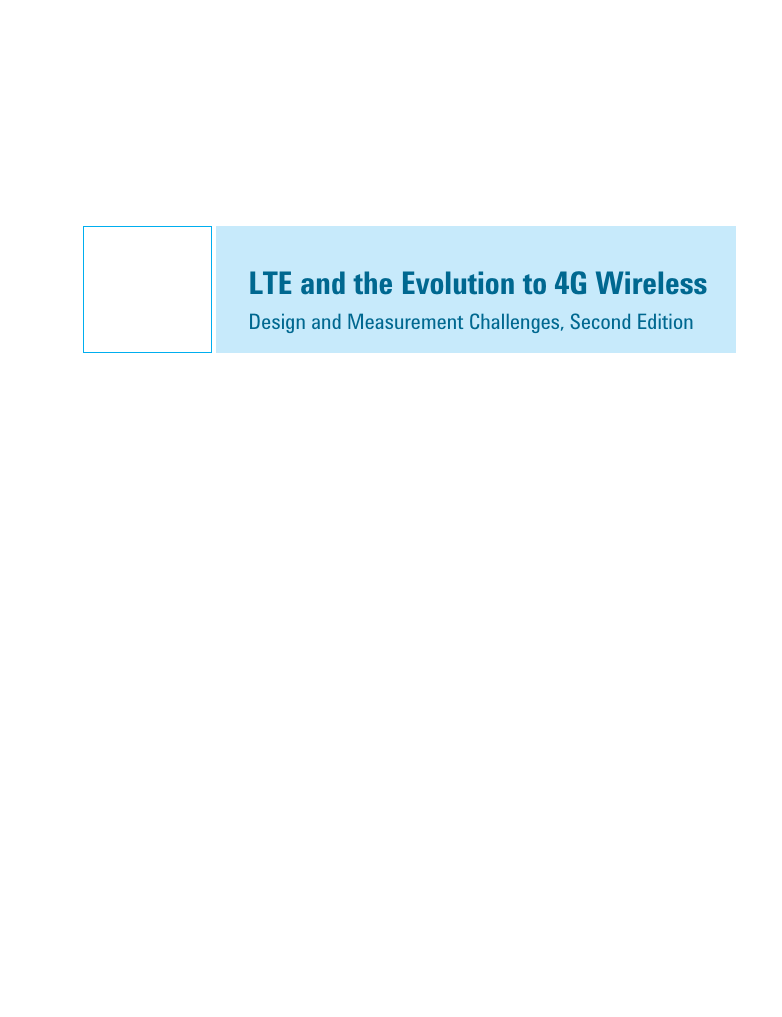
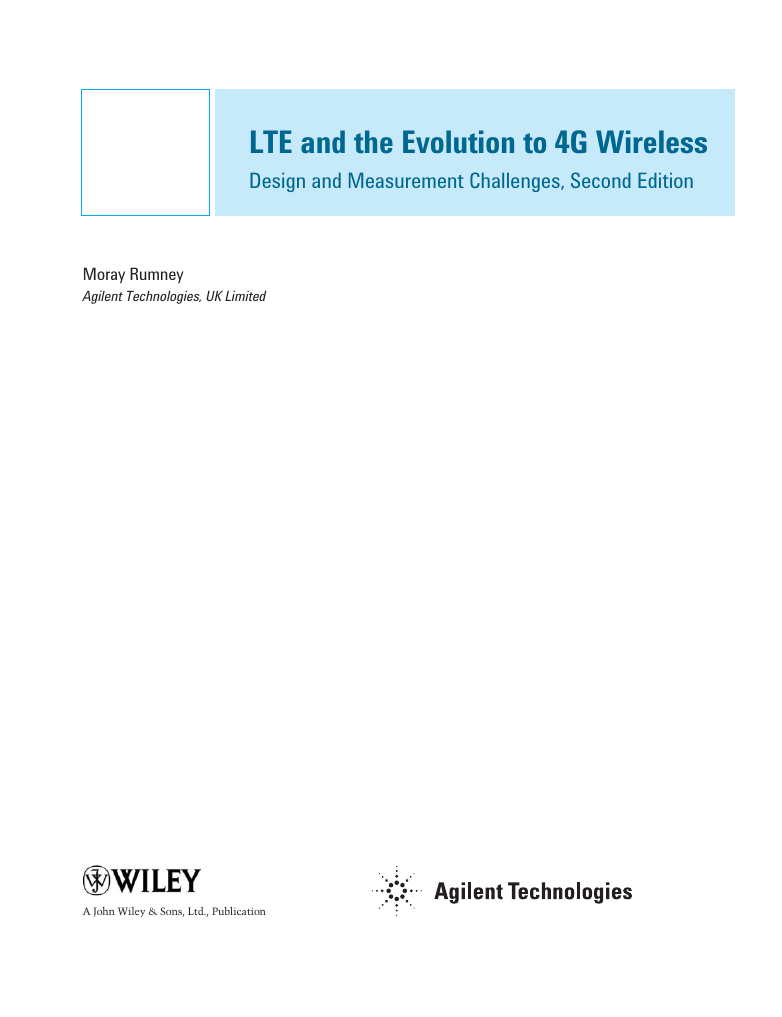
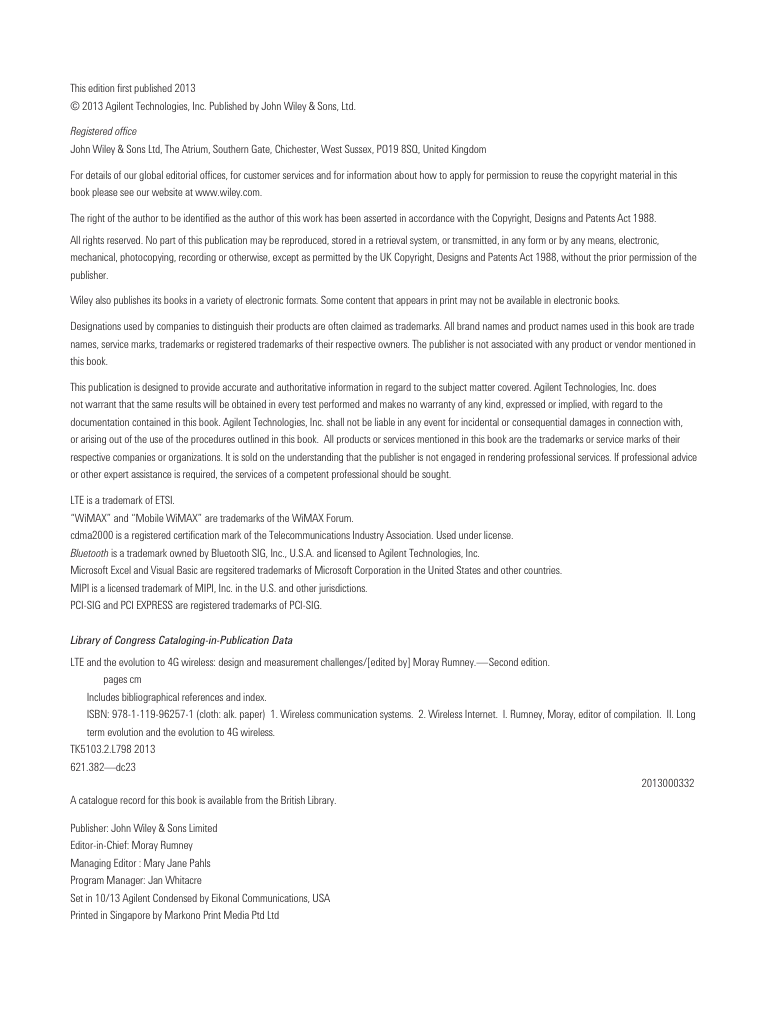

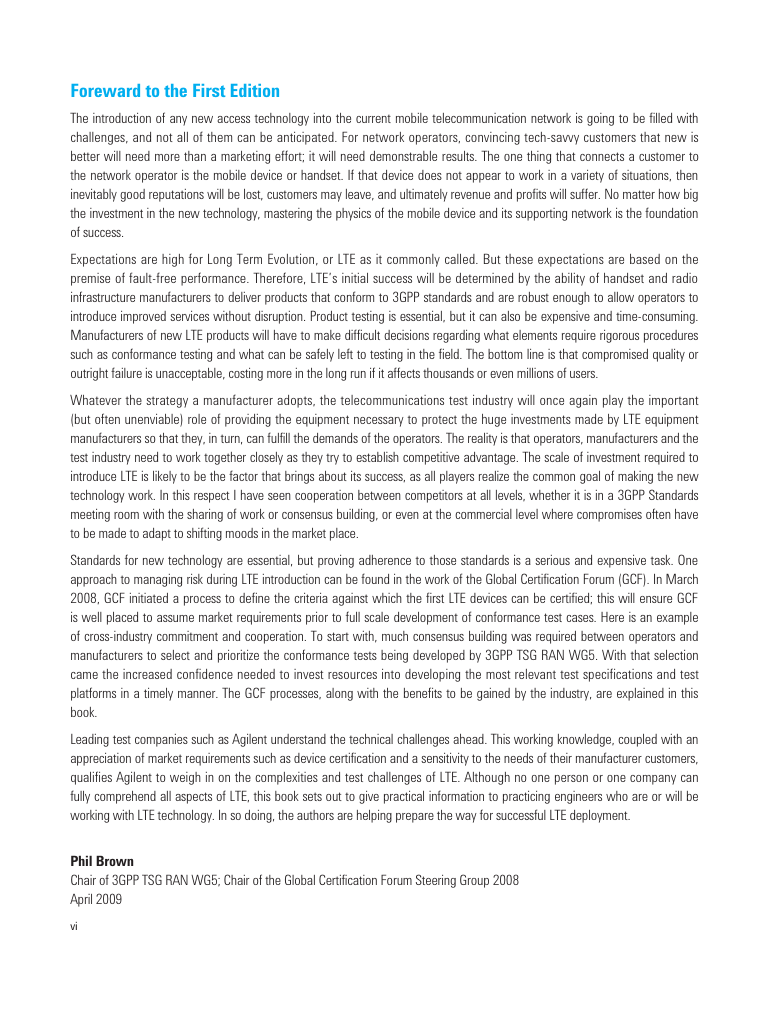
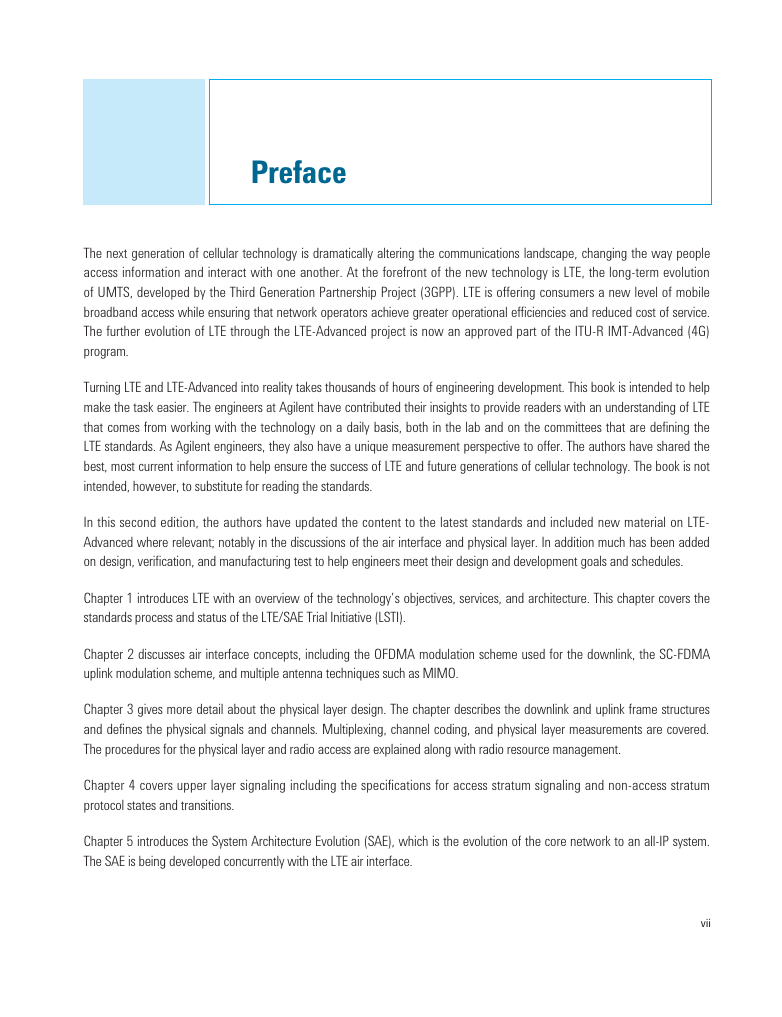
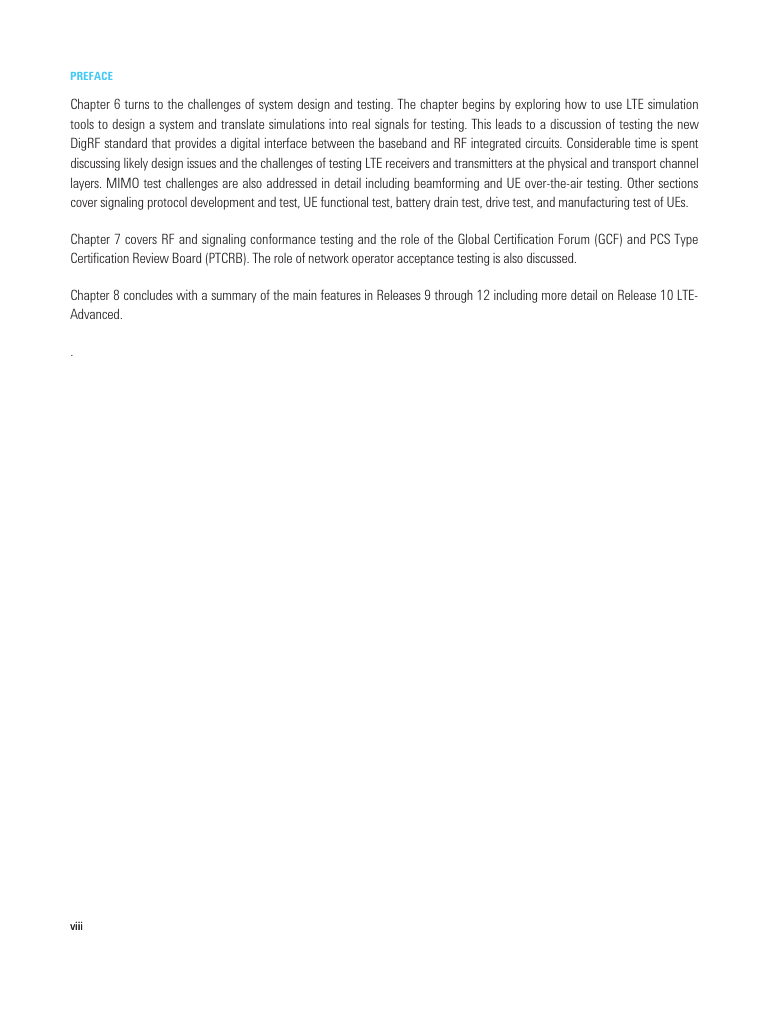
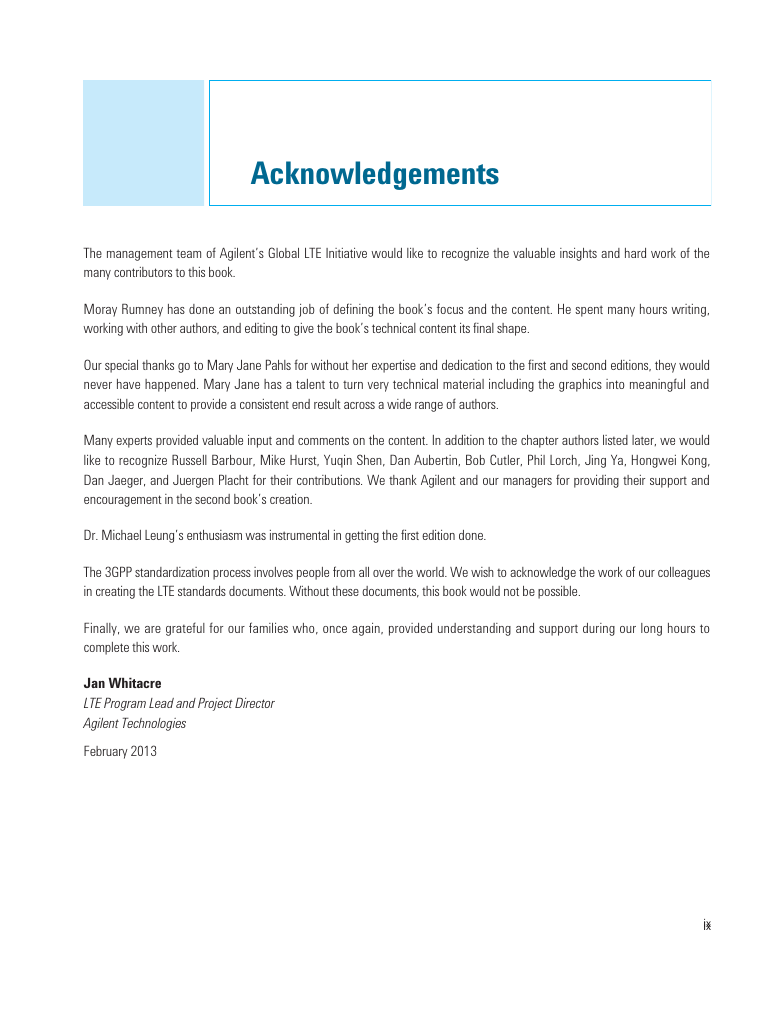








 2023年江西萍乡中考道德与法治真题及答案.doc
2023年江西萍乡中考道德与法治真题及答案.doc 2012年重庆南川中考生物真题及答案.doc
2012年重庆南川中考生物真题及答案.doc 2013年江西师范大学地理学综合及文艺理论基础考研真题.doc
2013年江西师范大学地理学综合及文艺理论基础考研真题.doc 2020年四川甘孜小升初语文真题及答案I卷.doc
2020年四川甘孜小升初语文真题及答案I卷.doc 2020年注册岩土工程师专业基础考试真题及答案.doc
2020年注册岩土工程师专业基础考试真题及答案.doc 2023-2024学年福建省厦门市九年级上学期数学月考试题及答案.doc
2023-2024学年福建省厦门市九年级上学期数学月考试题及答案.doc 2021-2022学年辽宁省沈阳市大东区九年级上学期语文期末试题及答案.doc
2021-2022学年辽宁省沈阳市大东区九年级上学期语文期末试题及答案.doc 2022-2023学年北京东城区初三第一学期物理期末试卷及答案.doc
2022-2023学年北京东城区初三第一学期物理期末试卷及答案.doc 2018上半年江西教师资格初中地理学科知识与教学能力真题及答案.doc
2018上半年江西教师资格初中地理学科知识与教学能力真题及答案.doc 2012年河北国家公务员申论考试真题及答案-省级.doc
2012年河北国家公务员申论考试真题及答案-省级.doc 2020-2021学年江苏省扬州市江都区邵樊片九年级上学期数学第一次质量检测试题及答案.doc
2020-2021学年江苏省扬州市江都区邵樊片九年级上学期数学第一次质量检测试题及答案.doc 2022下半年黑龙江教师资格证中学综合素质真题及答案.doc
2022下半年黑龙江教师资格证中学综合素质真题及答案.doc